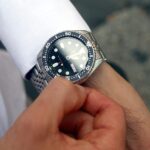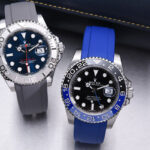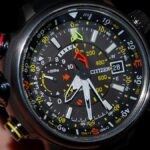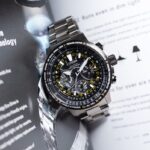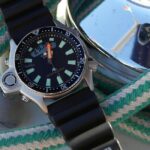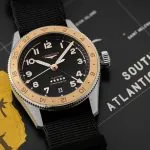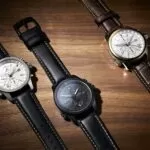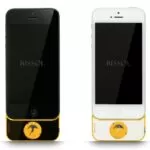If you have just landed this page, it means you're aware of what a moon phase watch is, but you're eager to know more and hopefully take suggestions on which luxury moon phase watch to add to your collection.
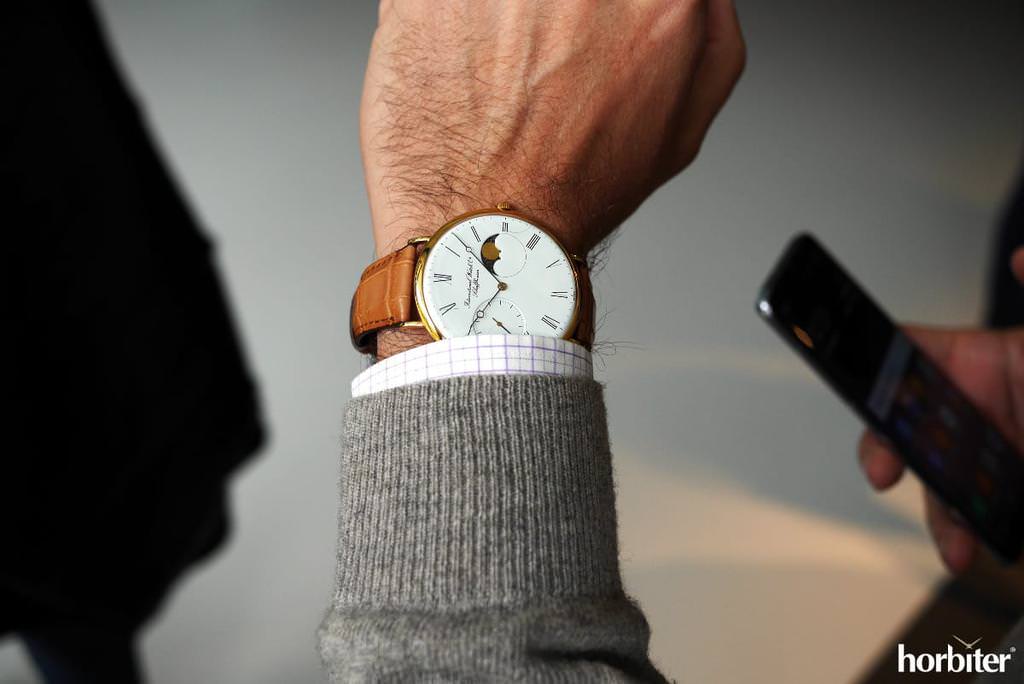 There are so many luxury timepieces featuring a moon phase complication that it's, therefore, hard to list them in an article this short. However, we will try and pick those who deserve, in our opinion, a connoisseur's attention.
There are so many luxury timepieces featuring a moon phase complication that it's, therefore, hard to list them in an article this short. However, we will try and pick those who deserve, in our opinion, a connoisseur's attention.
What is the moon phase? A brief guide for beginners.
Let's now try and explain, in a few words, what a moon phase means, first and foremost, to a non-expert audience. The lunar phases are recurring periods, whose durations are somewhat different from each other, marked by the moon's revolution around the Earth.
The moon is a satellite, and, therefore, unlike the stars, it does not shine. As seen from planet earth, it means the moonlight is no other than sunlight as reflected by the moon's surface.
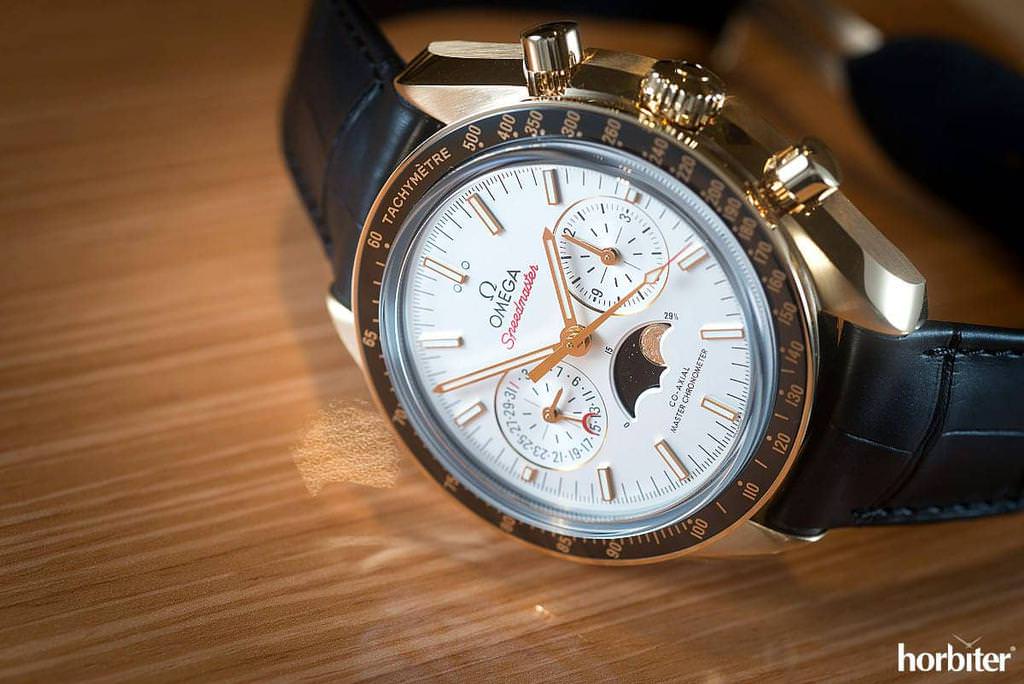 Therefore, according to the different positions during its journey, the Sun illuminates the route along its path. As seen from planet Earth, the moon's shape is usually a segment of our satellite, with the full moon, half-moon, and other "shapes" in-between, being no other than different representations of this phenomenon.
Therefore, according to the different positions during its journey, the Sun illuminates the route along its path. As seen from planet Earth, the moon's shape is usually a segment of our satellite, with the full moon, half-moon, and other "shapes" in-between, being no other than different representations of this phenomenon.
The lunar revolution around the Earth takes 29 days, 12 hours, 44 minutes, and 2,9 seconds, and its rotation goes west to east. In such a full revolution, here are the so-called lunar phases, else said "lunar cycle":
-
New moon: it lasts four days.
-
Waxing crescent: it lasts four days.
-
First quarter: it lasts four days.
-
Waxing gibbous: it lasts three days.
-
Full moon: it lasts four days.
-
Waning Gibbous: it lasts three days.
-
Last quarter: it lasts four days.
-
Waning crescent: it lasts four days.
Please take a look at the picture below to get an idea of the lunar cycles' evolution (source: By Orion 8 – Own work, CC BY-SA 3.0, https://commons.wikimedia.org/w/index.php?curid=11219265).
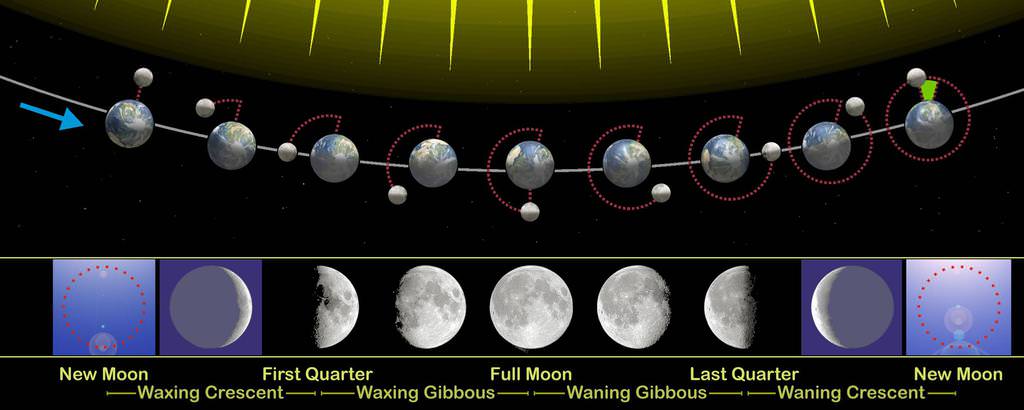
(source: Orion 8 – Own work, CC BY-SA 3.0, https://commons.wikimedia.org/w/index.php?curid=11219265).
Moon phase watches: how do they work?
According to which most moon phase watches work, the mechanism is based upon a disk's rotation, showcasing two mirrored moons in overturning positions concerning each other.
The lunar disc's movement jumps forward in increments, each occurring once a day and triggered by the hour hand. The total number of teeth on the powering wheel shall determine the measurement's accuracy.
Since lunar cycles differ in duration, the moon's rotation will be less delayed as the number of teeth increases. In short, the more teeth on the triggering wheel, the smallest is the lag between real and measured moon phases.
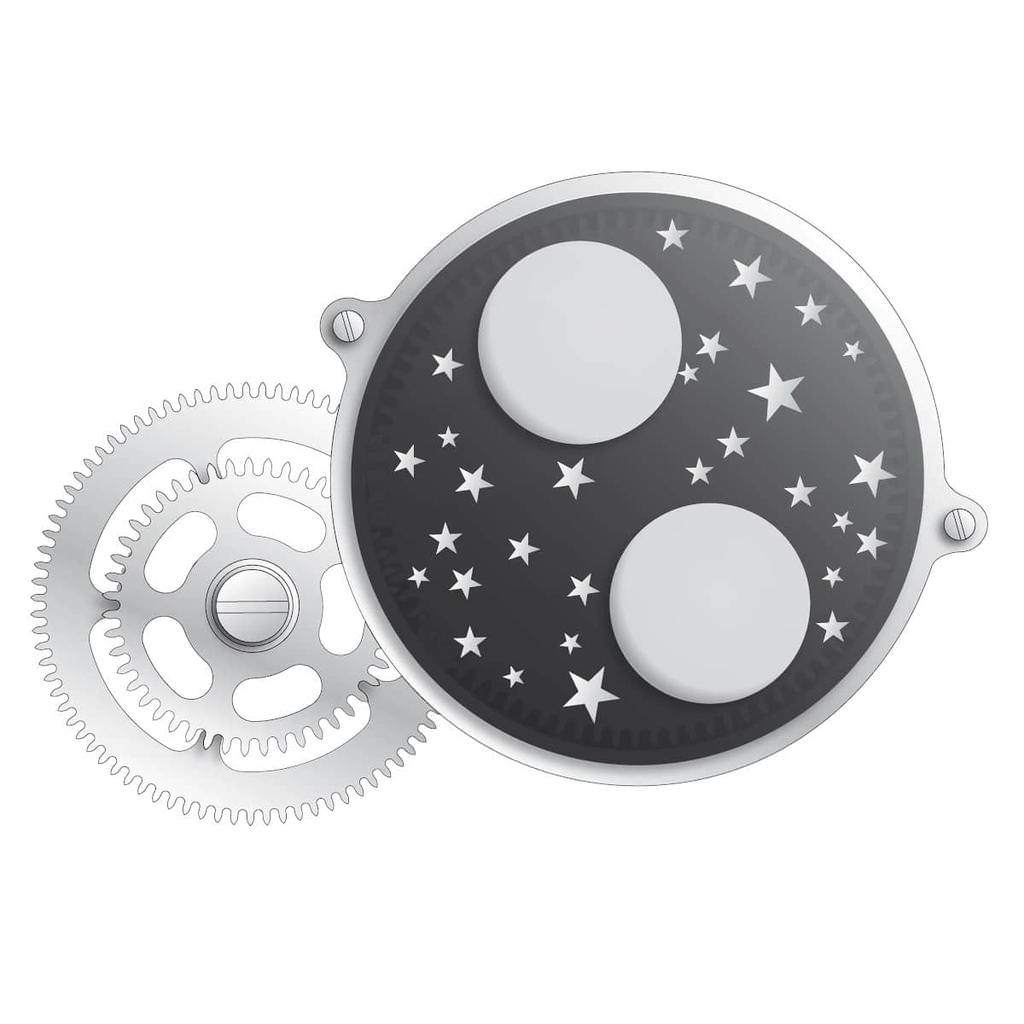 For example, the commonly used 59–tooth wheel acquires a 44–minute delay every 59 days, which accounts for a full-day delay in more than two and a half years. Consequently, expect to get your moon phase watch adjusted to bring the wheel back to its original position.
For example, the commonly used 59–tooth wheel acquires a 44–minute delay every 59 days, which accounts for a full-day delay in more than two and a half years. Consequently, expect to get your moon phase watch adjusted to bring the wheel back to its original position.
Watchmakers have ever since painstakingly worked to minimize this effect. The outcome is that the most refined luxury brands engineered mechanisms to reduce or avoid accumulating delays for more than a century (e.g., with a 135-tooth gear) so that the wearer can enjoy their moon phase watch without any manual adjustment over a lifetime.
Moon phase watches: here are our suggested models so far.
As stated above, there are plenty of moon phase watches, each displaying this complication according to the brand's pedigree and vision. As a result, you can enjoy different takes on the moon phase complication, with the product offering being extensive in either style, decoration, technical prowess.
We have picked some of those we were lucky enough to review in-depth so far, and our list is as follows.
Lange & Söhne Saxonia Moon Phase
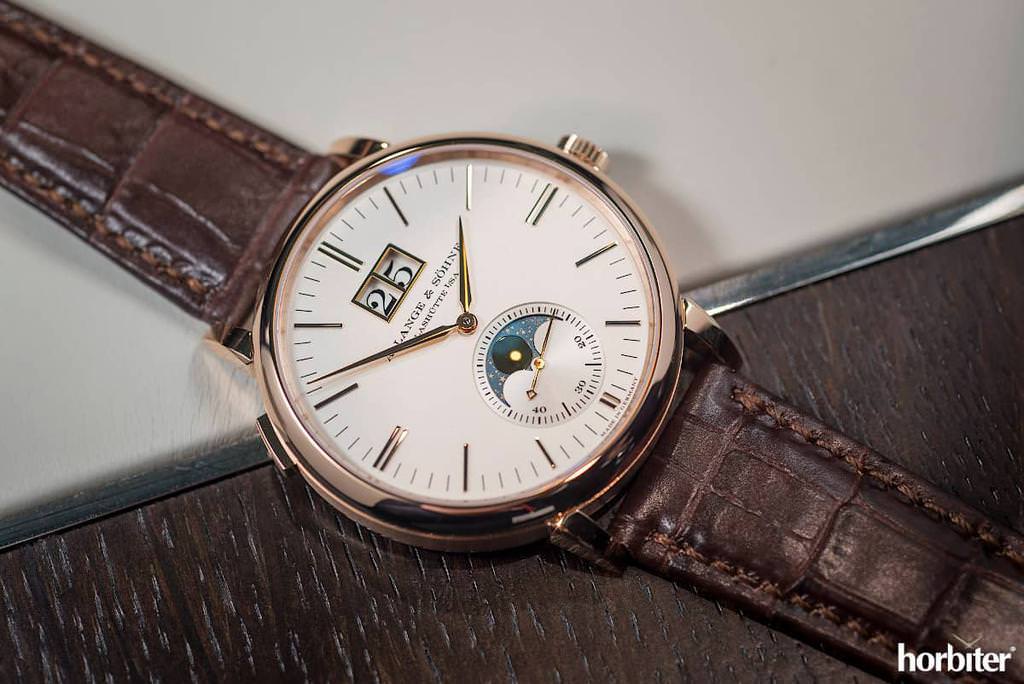 The Saxonia Moon Phase is as sleek and simple-looking as it is refined and superbly hand-decorated. Its engineering is such that the gap between calculating two consecutive rising moons and the moon phase natural cycle accounts for just 0,002 pp, which is impressive. In short, it is a mechanical masterpiece.
The Saxonia Moon Phase is as sleek and simple-looking as it is refined and superbly hand-decorated. Its engineering is such that the gap between calculating two consecutive rising moons and the moon phase natural cycle accounts for just 0,002 pp, which is impressive. In short, it is a mechanical masterpiece.
Please head to our article regarding the Lange & Söhne Saxonia Moon Phase and go through its stunning features.
Breguet Classique 7137
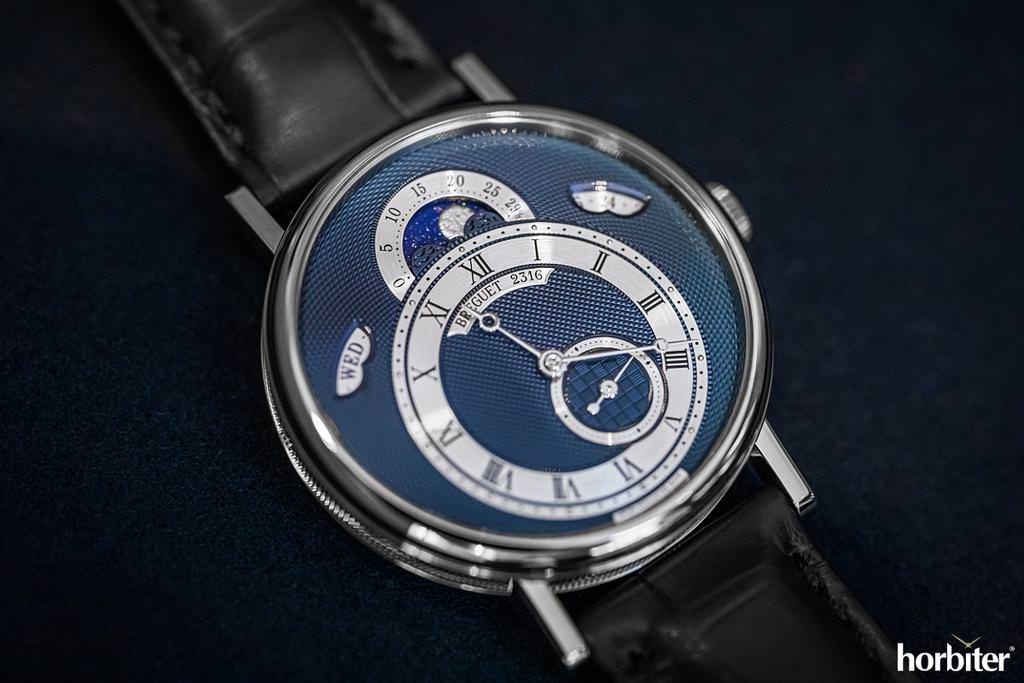 The timepiece pictured above draws inspiration from Breguet's Perpetuelle n°5 timepiece, whose dial stands out from a decoration standpoint, thanks to the Breguet-developed engine-turn technique, one out of many patents filed by Breguet.
The timepiece pictured above draws inspiration from Breguet's Perpetuelle n°5 timepiece, whose dial stands out from a decoration standpoint, thanks to the Breguet-developed engine-turn technique, one out of many patents filed by Breguet.
Please discover its features by jumping on here.
Cartier Drive de Cartier Moon Phase
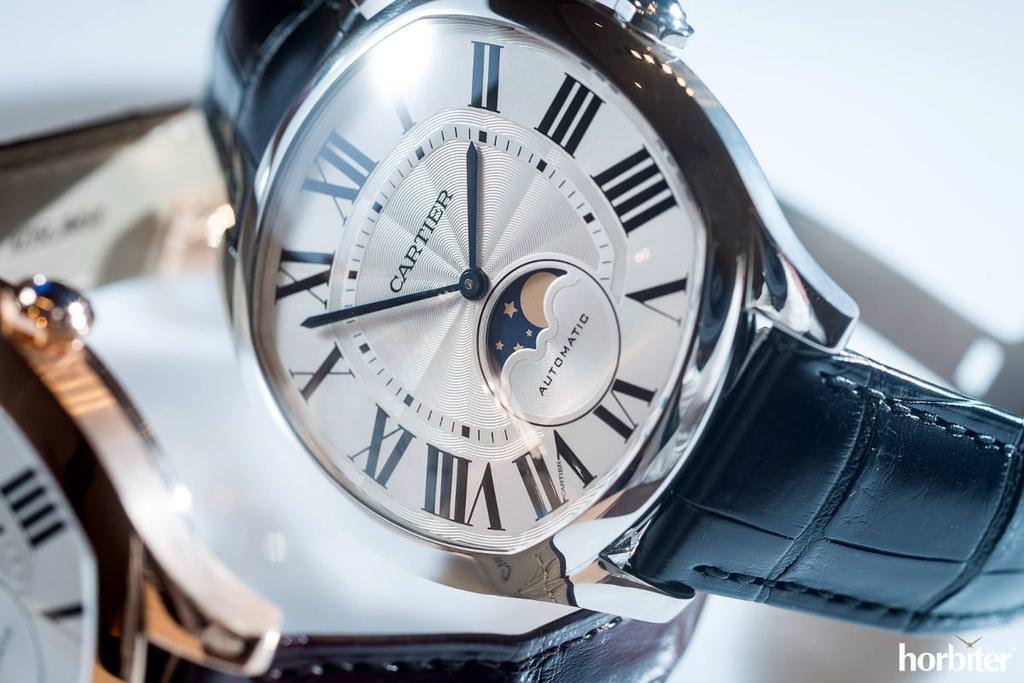 As we underlined in our in-depth article, the Cartier Drive de Cartier Moon Phase successfully blends "…elegance and style". It is a nod to classicism, with clean lines and Roman numerals standing out elegantly on the dial.
As we underlined in our in-depth article, the Cartier Drive de Cartier Moon Phase successfully blends "…elegance and style". It is a nod to classicism, with clean lines and Roman numerals standing out elegantly on the dial.
Please read more about the Cartier Drive de Cartier Moon Phase and its top-notch features.
IWC Portofino Hand-Wound Moon Phase Edition "150 years".
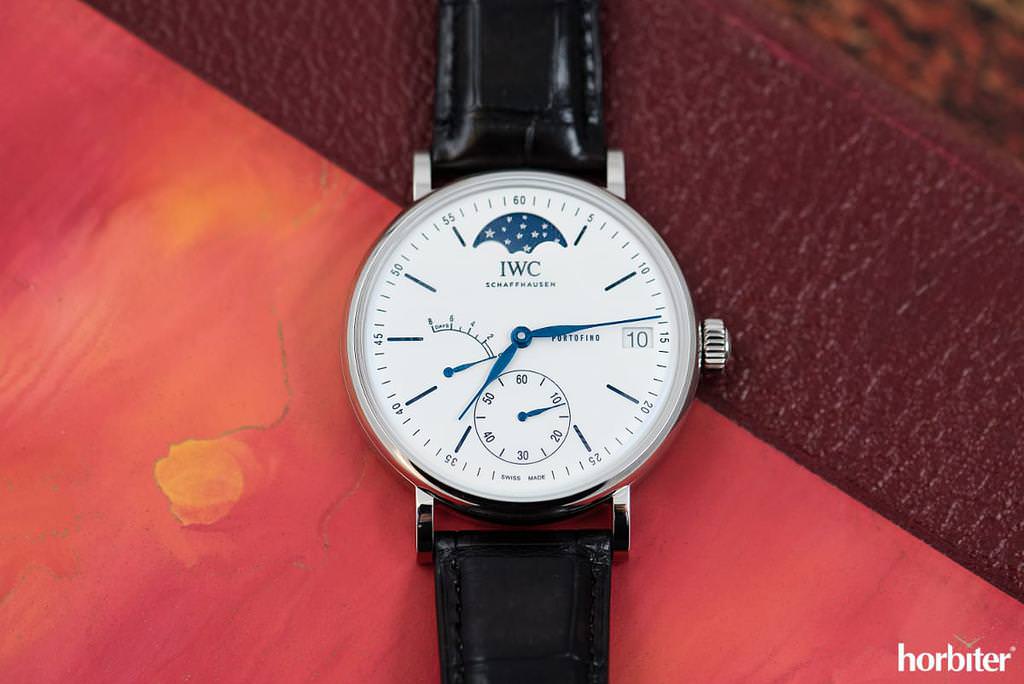 Last but indeed not least, here is another example of a classic and wonderfully designed moon phase watch.
Last but indeed not least, here is another example of a classic and wonderfully designed moon phase watch.
The displacement of the information is carefully arranged on the dial, given it also showcases the movement's power reserve.
Would you like to get more? Head to our IWC Portofino Hand-Wound Moon Phase Edition "150 years" in-depth review.
Moon phases: here is a piece of trivia.
The rising moon is also named New Moon and refers to the moon standing between the Earth and the Sun. Since the Sun is in the background, we see it as partially illuminated. Once the Moon and Sun are perfectly aligned, we can enjoy a solar eclipse.
In contrast, a lunar eclipse occurs when the Earth is placed between the Moon and the Sun. Here is when the moon is disappearing from our view since the sunlight is hindered by planet earth.
(Photo credit: Marco Antinori for Horbiter®)
Tommaso Sabia @Horbiter®
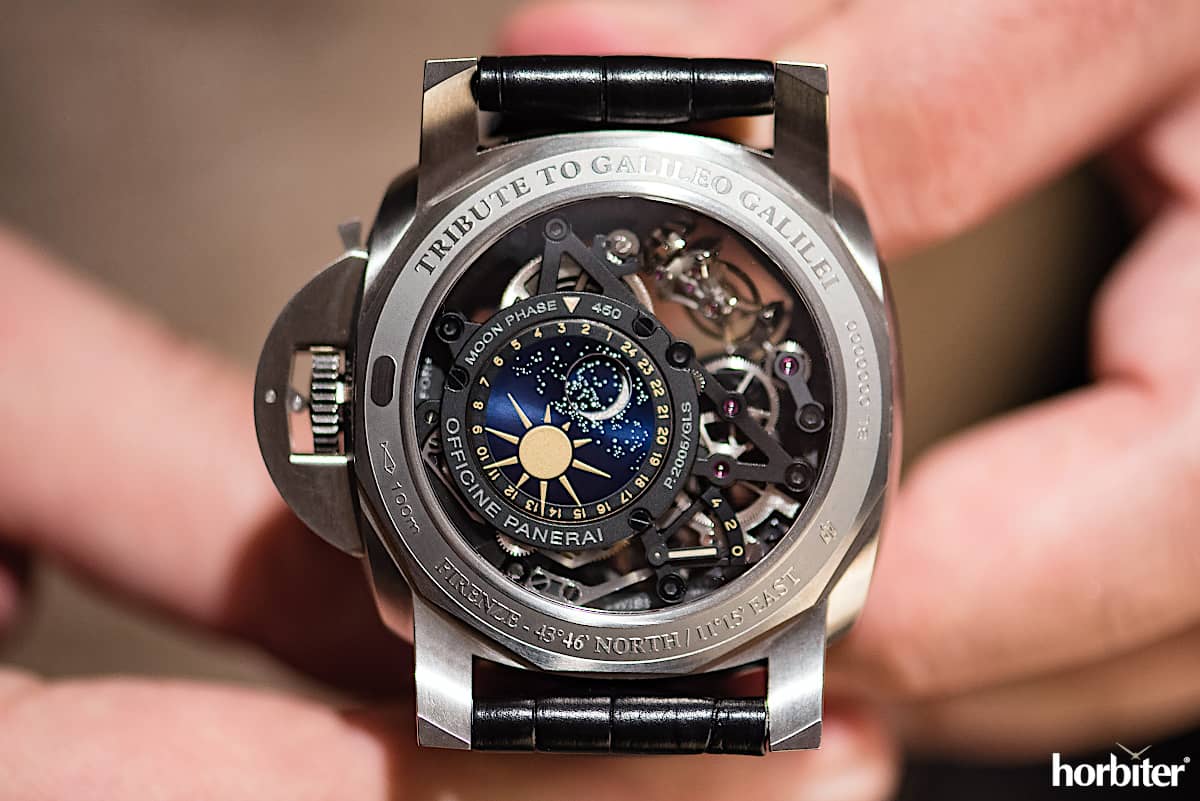
 There are so many luxury timepieces featuring a moon phase
There are so many luxury timepieces featuring a moon phase  Therefore, according to the different positions during its journey, the Sun illuminates the route along its path. As seen from planet Earth, the moon's shape is usually a segment of our satellite, with the full moon, half-moon, and other "shapes" in-between, being no other than different representations of this phenomenon.
Therefore, according to the different positions during its journey, the Sun illuminates the route along its path. As seen from planet Earth, the moon's shape is usually a segment of our satellite, with the full moon, half-moon, and other "shapes" in-between, being no other than different representations of this phenomenon.
 For example, the commonly used 59–tooth wheel acquires a 44–minute delay every 59 days, which accounts for a full-day delay in more than two and a half years. Consequently, expect to get your moon phase watch adjusted to bring the wheel back to its original position.
For example, the commonly used 59–tooth wheel acquires a 44–minute delay every 59 days, which accounts for a full-day delay in more than two and a half years. Consequently, expect to get your moon phase watch adjusted to bring the wheel back to its original position. The Saxonia Moon Phase is as sleek and simple-looking as it is refined and superbly hand-decorated. Its engineering is such that the gap between calculating two consecutive rising moons and the moon phase natural cycle accounts for just 0,002 pp, which is impressive. In short, it is a mechanical masterpiece.
The Saxonia Moon Phase is as sleek and simple-looking as it is refined and superbly hand-decorated. Its engineering is such that the gap between calculating two consecutive rising moons and the moon phase natural cycle accounts for just 0,002 pp, which is impressive. In short, it is a mechanical masterpiece. The timepiece pictured above draws inspiration from Breguet's Perpetuelle n°5 timepiece, whose dial stands out from a decoration standpoint, thanks to the Breguet-developed engine-turn technique, one out of many patents filed by Breguet.
The timepiece pictured above draws inspiration from Breguet's Perpetuelle n°5 timepiece, whose dial stands out from a decoration standpoint, thanks to the Breguet-developed engine-turn technique, one out of many patents filed by Breguet. As we underlined in our in-depth article, the Cartier Drive de Cartier Moon Phase successfully blends "…elegance and style". It is a nod to classicism, with clean lines and Roman numerals standing out elegantly on the dial.
As we underlined in our in-depth article, the Cartier Drive de Cartier Moon Phase successfully blends "…elegance and style". It is a nod to classicism, with clean lines and Roman numerals standing out elegantly on the dial. Last but indeed not least, here is another example of a classic and wonderfully designed moon phase watch.
Last but indeed not least, here is another example of a classic and wonderfully designed moon phase watch.